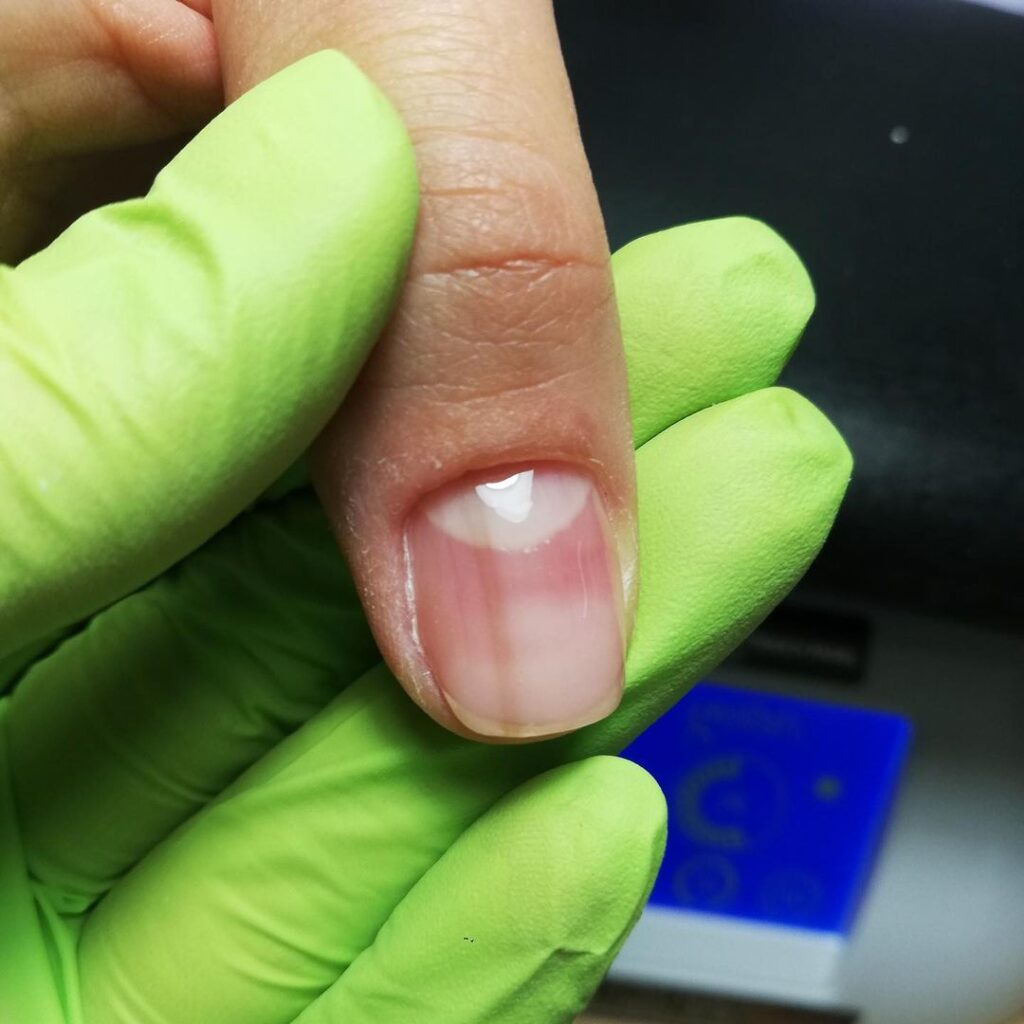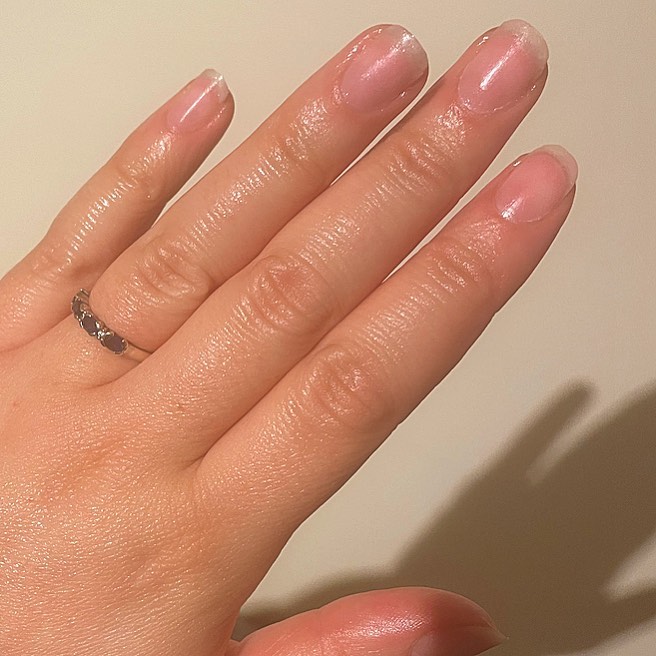The condition of having a black line on the nail is known as splinter hemorrhage. It can be harmless, but it can also indicate a potentially fatal underlying condition.
Black lines on the nails are a frequent issue that is generally caused by fungal or bacterial infections. Trauma to the nail may result in black lines on the nail. This occurs when you scrape your nails against a hard surface, such as a wall or a doorframe. It may also happen if you use a sharp tool to remove a hangnail or cuticle. These injuries generate microscopic breaks in the soft tissue under the nail, allowing bacteria or fungus to enter and proliferate within.
An ingrown hair beneath your nail may also generate black lines on your nails. As the hair develops into the skin, it produces a dark line around it. If you have this issue, consider cutting your nails on a regular basis to prevent them from growing too long, and keep them clean and dry to avoid gaps and crevices where germs may thrive.
Table of Contents
What is a Splinter Hemorrhage?
Splinter hemorrhage are small blood spots that develop beneath the nail. They resemble splinters and are caused by tiny blood vessels (capillaries) along the nail bed being damaged and bursting. The skin beneath the nail is referred to as the nail bed.
Through the nail, small amounts of blood from the damaged blood vessel are visible. The bleeding causes a splinter-like line to form in the direction of the nail growth. Splinter hemorrhages can happen on your toes or fingers.
What is Melanonychia?

Melanonychia is a nail discoloration that is black or brown. It can be longitudinal and run the length of the nail. It can also be diffuse or transverse, running across the width of the nail.
Melanonychia can appear in one or more nails. If you have a dark complexion, these lines may be a natural occurrence.
Whatever the cause, you should always have checked by a doctor because it can sometimes be a sign of other health problems. Melanonychia is also known as striata melanonychia or longitudinal melanonychia.
The lines can also appear on your toenails and are brown or black. It typically appears as a stripe that begins at the base of the nail bed and continues upward.
Difference between Melanonychia and Splinter Hemorrhage
Melanonychias are brown to black line on the nail. Longitudinal melanonychia is the most common type of melanonychia, while transversal and total melanonychia is uncommon.
Whereas the splinter hemorrhage is characterized by small areas of bleeding beneath your fingernails or toes. They can be black, red, or reddish-brown and run vertical black line on nail.
What Causes a Black Line on the nail?

A black line on the nail can form for a variety of reasons, including:
Injury
The most frequent cause of black line on the nail is when the nail bed is injured and a small blood vessel under the nail bursts. Even attempting to squeeze something tightly can result in nail damage. It can harm the small capillaries found beneath the nails. It can also lead to the formation of small blood clots beneath the nail plate. In fact, injury is the cause of many cases of splinter hemorrhage and longitudinal melanonychia.
Injuries can be caused by a variety of factors, including:
- chewing or biting one’s nails
- removing a nail
Nail discoloration can be caused by the following medical conditions. A splinter hemorrhage can occur as a result of the following:
- Psoriasis
- Diabetes endocarditis
- Raynaud’s syndrome
- Vasculitis
- Lichen planus on the nails
Melanonychia is caused by an overproduction of skin pigment. According to 2020 research, other causes include:
- Amyloidosis
- Addison’s syndrome
- Cushing’s disease
- Hyperthyroidism
- Chronic radiodermatitis
- Chronica Paronychia
- Bowen’s syndrome
- Squamous cell carcinoma (SCC)
Is it possible to treat the black line on the nail?
Treatment for black line on the nail varies depending on the underlying condition. Sometimes they don’t need to be treated, and the black lines fade away with the nail.
There is no standard treatment procedure because the health conditions that cause black lines vary.
For example, if the black line on the nail are caused by endocarditis, treatment may include antibiotics and, most likely, surgery. Because psoriasis is a chronic condition, treatment includes a variety of topical and oral treatments, as well as prevention strategies.
If melanoma is the cause of the black line on the nail, the melanoma and the skin underneath the fingernail are detached. If the melanoma has spread to the bone, the doctor may amputate the finger to avoid any further spread.
How to remove black line on the nail

There are several natural methods for removing the black line on the nail. Hydrating your fingernails to keep them strong and healthy, also find out how to take off acrylic nails.
Diet Alteration
- Consider consuming foods high in nutrients
- Include many fruits and vegetables in your diet
- Include nutritious foods like dark greens, fish, and eggs, as well as foods high in zinc, iron, and vitamin C
Using Baking Soda to Treat Fungus Infections
- The antifungal properties of baking soda prevent fungal infections
- In a bowl, combine 14 cups of baking soda, 1 cup of apple cider vinegar, and water to create a mixture of baking soda
- Soak the nails with black nails in the mixture for 15 minutes
- After the treatment, use a soft towel to dry your nails
- This treatment can be performed twice daily to eliminate the fungus and prevent the reappearance of black lines
Coconut Oil to treat Fungus Infections
Coconut oil contains antifungal properties. Coconut oil functions as a barrier on the black line on the nail and protect it from moisture. Wet areas provide ideal conditions for the growth of bacteria and fungi. Consider applying coconut oil directly to the nail three times per day to prevent bacterial and fungal growth.
Citrus for Fungus Infections
Antibacterial and antifungal properties are present in citrus fruits. Place a cotton ball dipped in lemon juice on your nails three times per day for this treatment. You can also apply lemon juice directly to your nails.
Yogurt
- Yogurt is a probiotic consisting of beneficial bacteria
- Apply yogurt directly to your nails for fifteen minutes
- Remove the yogurt from your nails, then pat them dry
- This treatment can be performed twice or thrice per day
Maintaining Proper Nail Health

- Maintain nail hygiene by cleaning and drying your nails to prevent bacterial and fungal growth.
- Regularly trim your nails and avoid letting them grow too long. Avoid using harsh products that can damage your nails.
- Consider natural nail care products and hydrate your nails.
- Protect your nails when handling chemicals by wearing gloves
- Consume a protein-rich diet to strengthen weak and brittle nails
FAQs
Are splinter hemorrhages serious?

They are nothing serious; splinter hemorrhages have the potential to temporarily alter the nail beds. However, in some cases, the changes associated with splinter hemorrhages may indicate an underlying disease. Splinter hemorrhages in the case of infective endocarditis indicate a very severe condition.
How quickly do splinter hemorrhages heal?
Typically, splinter hemorrhages require three to four months to heal. Immediately consult a physician if splinter hemorrhages appear without trauma or injury. Your physician will order a series of tests to determine a potential cause.
What deficiency causes black lines on nails?
The appearance of vertical black lines on the nails may indicate a variety of dietary deficits. Iron insufficiency and zinc deficiency are the two most prevalent. A lack of dietary iron is the leading cause of iron deficiency and the resultant anemia. White patches or black lines on the nails are signs of zinc insufficiency, which is caused by not getting enough zinc in the diet.
Conclusion
A black line on the nail indicates the formation of a thin, longitudinal stripe under the nail plate. It is frequently caused by splinter hemorrhages, longitudinal melanonychia, and, in rare instances, subungual melanoma.
Examining the nails and reviewing the patient’s medical history is a common method for diagnosing nail marks. Additionally, they may conduct tests such as a biopsy.
Vasculitis, psoriasis, and lichen planus are the causes of a black line on the nail. Other causes include chemotherapy and antimalarial medications.
The treatment focuses on addressing the underlying cause and enhancing the appearance of the nail. Methods include consuming a healthy diet and applying clear gel to the nails.
Make a doctor’s appointment if a black line on your fingernail causes you concern.

